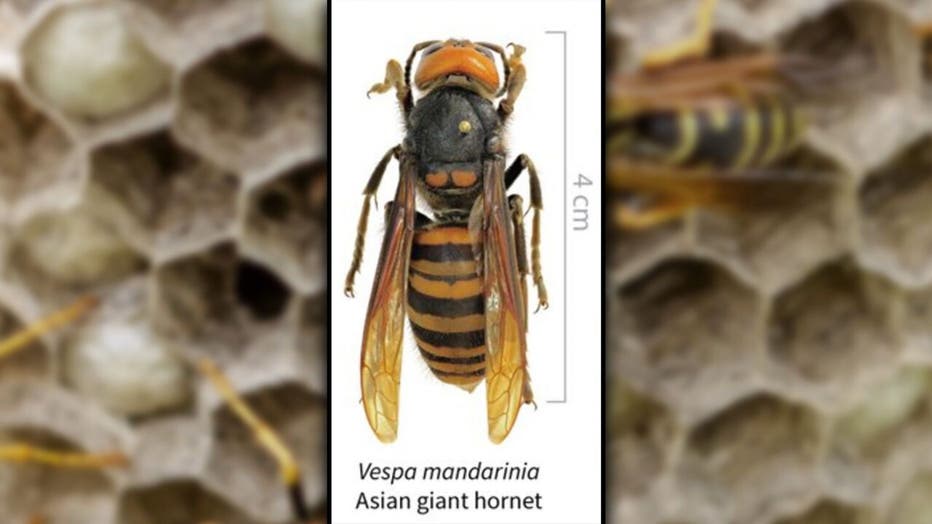Texas A&M AgriLife forms task force to head off possible emergence of "murder hornets" in Texas
COLLEGE STATION, Texas - At the request of Gov. Greg Abbott, Texas A&M AgriLife experts are leading a specialized task force to spearhead an initiative to protect citizens, agriculture and honey bees if "murder hornets" come to Texas.

The invasive Asian giant hornet has been sited in Washington state for the first time in the U.S. (Washington State Department of Agriculture)
The Asian giant hornet, nicknamed the "murder hornet," was sighted in northwestern Washington state and Canada, causing concern across the country. The hornet, Vespa mandarinia, preys on bees and can decimate local honey bee populations essential for fruit and vegetable crop production.
The hornets are also fiercely protective of their nests, says Texas A&M AgriLife, and they deploy painful stings that can cause fatal allergic reactions in those already sensitive to bee stings. The world’s largest hornets, these insects are native to many areas, from Japan and South Korea to India and Pakistan. Up to 2 inches long, the insect is about a half-inch larger than the “cicada killer” wasp common in Texas.
RELATED: Japanese honeybees reportedly learned how to ‘cook’ murder hornet
The task force brings together experts from Texas A&M AgriLife Research, Texas A&M AgriLife Extension Service, the Texas A&M Department of Entomology and the Center for Cross-Border Threat Screening and Supply Chain Defense — a Department of Homeland Security Center for Excellence with representation from various parts of the Texas A&M University System.
---------
Get breaking news alerts in the FOX 7 Austin News app. It is FREE!
---------
The task force is planning several avenues of action, including providing science-based educational materials and working on detection efforts for border and port-of-entry points. The team will also assist with mitigation efforts to protect Texas honey bee populations. Finally, the task force will prepare statewide identification efforts if necessary.
How the pests ended up in North America is not yet clear. Washington state investigations are focusing on the possibility that container ship or airplane transport may have inadvertently transported a fertilized female hornet.


